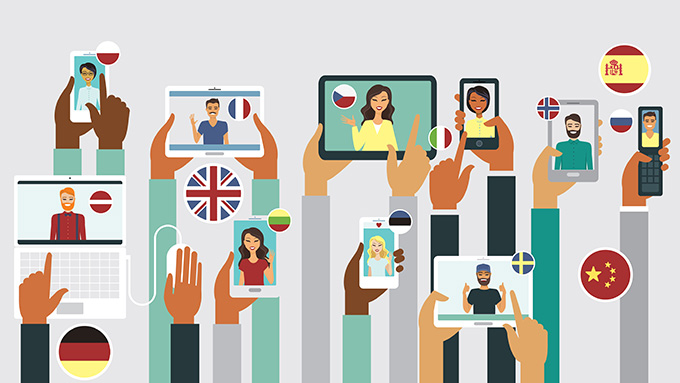
In 2024, the artificial intelligence company Open AI presented GPT4-o, a new large language model ( Large Language Model in English) capable of “reasoning” and interacting with text, image and audio.
In one of the videos distributed after the launch, two people use a mobile phone to ask GPT4-o to listen to them and translate from English to Spanish and from Spanish to English so that both interlocutors can communicate using what applied linguistics calls their L1, that is, their respective mother tongues.
In another video, two people have a conversation with GPT4-o in which the application is capable of changing the tone of voice and adapting to the interlocutors’ requests regarding the nature of the dialogue.
Communicate with mobile devices in any language
For those of us who grew up with a poster of C-3PO in our bedroom, the Star Wars droid capable of understanding and speaking millions of languages, what we see in both videos may seem insignificant. However, he is not.
The ease with which interlocutors use their own personal devices, communicating naturally, represents a before and after in the way in which we will interact with technology. We pick up our cell phone, we speak in our language (L1) and we can understand each other with another person who does not speak it and whose language we do not speak.
Two questions immediately arise: Does it make sense to learn languages if our mobile phone can “speak” and “understand” any language? What is the role of language teaching in this context?
Two scenarios have dominated the debate on the use of AI in language learning: the first is a catastrophic scenario that sees AI as a threat that will eventually end language learning as we know it today; The second sees in AI an opportunity to promote digital literacy that encourages the critical spirit of learners when evaluating its uses.
Catastrophic scenarios
Catastrophic scenarios attribute to technology absolute power over human behavior and social organization. In these scenarios, technology makes language learning unnecessary, relegating this activity to specialists and scholars as happens in Isaac Asimov’s Foundation series of novels , where all human knowledge, including the various languages spoken by human beings in different galaxies, They are guarded by a kind of university foundation.
Already in the 1960s, computer-assisted language learning was determined by behavioral theories that promoted programmed teaching, repetition exercises and the role of reinforcement . In this aspect, a computer is tireless, since it is capable of correcting the learner a thousand times over. In this paradigm, the dispensable element would be the language teacher and his replacement would be the computer.
Integrative scenarios
Other scenarios propose a future where AI is part of the learning and use of foreign languages. In them, AI is integrated into our computers and mobile devices, helping us to write emails, extract and summarize information more quickly, obtain specialized lexical lists, obtain advice on certain lexical or grammatical uses or, among other functions, to improve texts following our instructions.
All this will motivate the appearance of a series of new challenges. Firstly, language learning has until now been defined by a set of practices regulated by official institutions such as educational authorities, schools or universities. Formal learning views the use of generative AI with suspicion, since it questions the current model through which the learner must produce oral or written texts that are evaluated by the teacher.
Secondly, informal language learning is booming. AI will help this type of learning increase in the future. Free access to millions of open resources and mobile applications like DUOLINGO rival formal learning since the Covid-19 pandemic. According to data from DUOLINGO , Spanish is the second most learned language in the world with 17% of the app ‘s users . These learnings, it is important to remember, do not take place in the classroom.
Finally, we do not yet know how AI will change our relationship with reading and writing practices, although it would not be reckless to affirm that AI will contribute to the emergence of a new ecology of teaching and learning practices that will bring changes as important as those it entailed. the appearance of the internet last century. In this new scenario, the critical ability of learners to evaluate generative AI products will play a key role in its proper use.
The future of AI and language learning
Although it is not ruled out that in the distant future technology will eliminate linguistic barriers between humans, language learning will continue to be a central activity in formal education in the following decades.
In professional contexts, the knowledge and use of various languages will continue to be a key competence in super-diverse business and social cultures. Furthermore, applied linguistics has shown that learning languages increases our analytical abilities thanks to the ability to extract rules and patterns of use and our innate cognitive abilities for abstraction and generalization. One thing we can say with certainty: used critically, generative AI will present countless opportunities to deepen language learning and use both inside and outside the classroom.
Author Bio: Pascual Pérez-Paredes is University Professor in Applied Linguistics and English Linguistics at the University of Murcia
